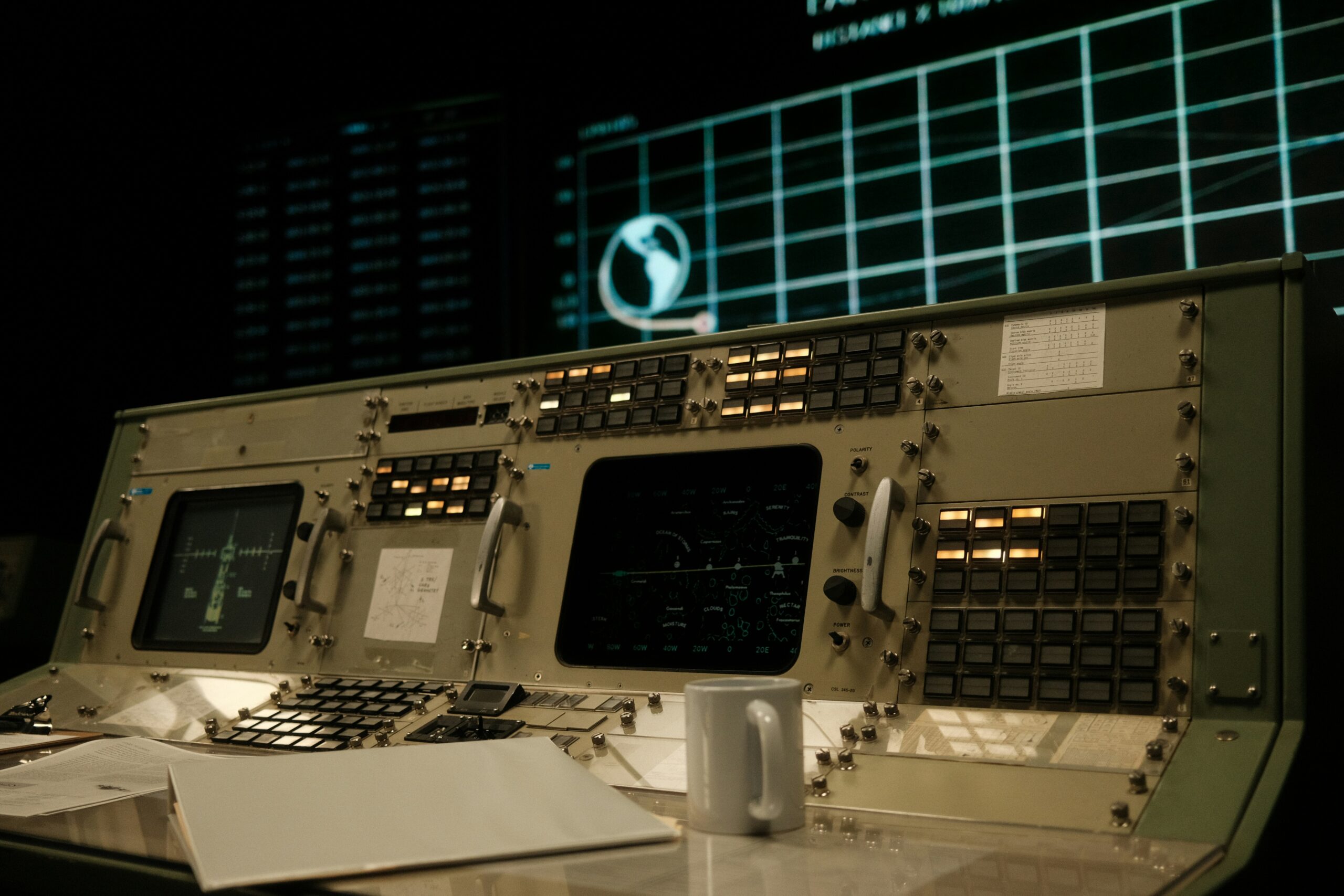The F-35 is entirely dependent on the ALIS system for its maintenance, and on US-based software laboratories for its mission data loads, so that its operation requires secure and high-speed Internet links between its operating bases and the US. (USAF photo)
Lockheed Martin built the Autonomic Logistics Information System, or ALIS, to track every F-35 part and schedule each fix. A jet must log into ALIS before and after each sortie. If the database flags a mismatch, the pilot stays on the ground. The software lives on servers in Fort Worth but needs constant two-way traffic with squadrons scattered across Europe, Asia, and Australia. No network, no flight-clearance. Concerns also persist that ALIS performance metrics may reflect manipulated flight-test reporting rather than true operational readiness.
ALIS Dependency and Sovereignty Risks in F-35 Operations
Mission Data Files (MDFs) form the second dependency. They tell the radar and electronic-warfare set how to label friend, foe, and unknown signals. The Pentagon decided that all reprogramming labs would sit inside the United States. Partners fund those labs, yet half the staff wear American badges, and all source code stays locked behind U.S. firewalls. When a new radar pops up in Syria, Estonia, or the South China Sea, the raw data must cross the Atlantic or Pacific, wait in a queue, and then return as an updated MDF. Only then can a foreign F-35 identify the fresh emitter.
Michael Gilmore, the Pentagon’s director of operational test at the time, warned in his FY 2014 report that “mission data load development and testing is a critical path to combat capability.” Without the latest file, the jet may mis-tag a threat or miss it outright. That risk grows as enemy waveforms spread faster than MDFs can travel through trans-oceanic cables.
Those cables deserve more attention. A Wired analysis on Oct 29 2015 pointed out that a little over 200 undersea systems carry almost all global internet traffic. Many land within reach of fishing trawlers, dredgers, and saboteurs. Later that same week the New York Times reported unusual Russian submarine activity near major Atlantic trunk lines. Western officials fretted over a scenario in which cables get cut during a crisis. Even a partial outage would choke the steady stream of F-35 data uploads and downloads.
Global Connectivity as a Strategic Weak Point
Three distinct digital highways keep each Lightning II alive:
- The ALIS gateway that clears flights and logs maintenance.
- The MDF pipeline that feeds classified threat libraries back and forth.
- A growing stream of raw intelligence collected by the jet’s own sensors, shipped home for analysis, then sent back out as refined files.
All three run largely through commercial fiber because satellite bandwidth cannot handle petabytes per month. A single aircraft generates gigabytes during one short training hop, and the program counts on thousands of daily sorties once every partner reaches full strength.
F-35 ALIS System Limits Allied Autonomy and Rapid Reaction
Aviation Week calculated that partners are paying roughly $150 million for each regional reprogramming lab. The 2015 DOT&E report highlighted the same concern, emphasizing how such centralization limits flexibility and creates bottlenecks in software delivery. The first two opened at Eglin AFB, Florida, and NAS Point Mugu, California. One cell covers U.S., Norwegian, and Italian needs; the other handles Israeli and Japanese jets. The United Kingdom and Australia fund their own branch inside Eglin rather than on sovereign soil. In effect, eight nations fly the airframe but one nation owns the brain.
Reprogramming Lab Centralization Raises Sovereignty Concerns
The FY 2015 DOT&E report counted more than 22,000 technical-data modules already inside ALIS. Each module can grow whenever engineers detect wear or add a new supplier. Lt. Gen. Christopher Bogdan told Congress on Oct 21 2015 that a 90-minute flight then required a 90-minute debrief file transfer. The program office aimed to cut that to fifteen minutes—still long enough for a fighter on alert.
Proprietary code further limits flexibility. Foreign staffs lack full access, so they cannot patch bugs or run local diagnostics. Australia’s Defence Science and Technology Group concluded in a classified brief leaked last month that “current sovereignty over software is nil.” Britain won a partial concession in 2012 yet still sends most code questions to Fort Worth.
Data sovereignty carries costs beyond pride. A base deploying the F-35 must now pack server racks, spare drives, and U.S. civilian contractors. Moving ALIS across continents needs an Air Force C-17 because the hardened cases will not fit inside a C-130. Once on site the boxes require fiber or high-band SATCOM. During Red Flag exercises at Nellis AFB, maintainers reported wait queues when multiple squadrons tried to sync at once.
ALIS Deployment Burden Undermines Operational Flexibility
The contradiction shows in Europe. Norway’s ten-hour polar flights sit far from high-capacity cables, so the Royal Norwegian Air Force built an interim-sync process that stores MDF updates on secure drives flown in on transport aircraft. That workaround works slowly: threat libraries may lag days behind events.
ALIS itself stumbled through 2015. Engineers found Electronic Equipment Log (EEL) errors that marked healthy parts as faulty and vice versa. Pilots in Hill AFB waited for manual overrides while maintainers cross-checked paper records. Each delay burned sortie rates and confidence.
Hard numbers reveal the scale. Every F-35 holds roughly 8 million lines of code on board and taps into more than 24 million lines off board. The MDFs alone are twice the size of the F-22 equivalent and split into twelve regional sets. Software patches arrive almost weekly as Block 3F matures. Partners carry the operational risk, yet Washington—by design—controls the push.
Risk of Centralized Control Over Autonomic Systems
Inside the Pentagon the arrangement feels safe: central labs guard secrets and ensure a common baseline. Outside, allies find themselves betting entire air-forces on a single foreign server farm. The gamble might pay off during calm times. It looks fragile under stress.
The undersea networks highlight that fragility. In 2008, ship anchors off Alexandria severed five Middle-East cables, and Egypt lost 70 percent of capacity. A repeat in 2020 could paralyze European F-35 wings for days. Even without sabotage, cable repairs average sixteen days, far longer than an air campaign’s opening phase.
Field commanders would then face stark options. They could launch without new MDFs and accept mis-identification risk, or ground the fleet until links return. Neither choice matches the sales pitch of a sensor-fusion marvel ready for day-one wars.
Foreign ministries also worry about an unseen “kill switch.” No document confirms one, but the fact that ALIS can block a take-off proves that remote denial is possible. A disagreement over strategy might turn into sudden jet unavailability, not through malice but through withheld software support.
Congressional auditors flagged similar points. The GAO noted in an early-2015 brief that “contractor lock-in limits competitive pressure and reduces sovereign resilience.” The office urged the Pentagon to publish a transition plan toward partner-owned labs. None has surfaced.
Complete independence may be unrealistic. Still, other U.S. programs strike a balance. Japan maintains its own F-15 electronic-warfare files. The United Kingdom rewrites Typhoon mission data in Lincolnshire. Each nation trains coders, not just pilots. By contrast, the F-35 model leaves skill gaps that will widen over time.
In short, the Lightning’s stealth hides a transparent chain: flight line → fiber hub → Fort Worth mainframe → U.S. reprogramming lab → flight line. Break the chain, break the jet. The question is no longer technical. It is political and strategic: will allies accept that level of dependence the day deterrence turns to combat?
F-35 Kill Switch Concerns Resurface – March 2025 Update
Nearly a decade later the digital leash still holds, though the hardware changed its label. The Autonomic Logistics Information System morphed into the Operational Data Integrated Network, ODIN, yet the location of the servers and the ownership of the code stayed American. GAO-23-105341, released last year, shows ODIN running two years late with only four of the promised fourteen deployable kits in service. Those kits rely on commercial cloud nodes hosted in the United States, forcing foreign operators to route traffic across the same ocean cables flagged in 2015.
Operational Data Integrated Network (ODIN) Reinforces Long-Standing Sovereignty Gaps
Technology Refresh 3, the bridge to full Block 4 capability, missed its January 2025 fielding date. Acting DOT&E director Raymond O’Toole wrote that software maturity “remained significantly behind schedule throughout FY 2024,” and that lingering bugs kept half the test fleet on the ground. The failure of TR-3 further served to reveal F-35 obsolescence in the face of accelerating threat evolution. Danish and Dutch squadrons training in Arizona reported download times close to three hours per sortie despite ODIN’s promised quarter-hour target.
Dependency concerns went public again when The Times obtained a redacted section of Germany’s purchase contract. Berlin must pre-notify Washington of strike missions and may see support paused “for urgent U.S. national-security reasons.” German lawmakers asked whether an American veto could stall deterrence patrols over NATO airspace. The defense ministry insisted the clause mirrors standard export rules, yet the debate revived talk of a hidden kill switch. The Aviationist tracked the rumor, noting that direct shutdown remains unlikely while withholding MDF updates remains entirely legal—and sufficient to clip wings.
Partner efforts to gain autonomy made uneven progress. Britain operates its own Reprogramming Laboratory at RAF Marham, but still ships raw signal data to Eglin for validation. Australia, Canada, and Italy planned a shared Southern Cross lab, then froze spending during budget resets. Lockheed Martin’s global support team now travels with rugged “Pod 7” servers to exercises, carrying compressed MDFs on encrypted drives, a partial hedge against cable outages. The fix buys time, not sovereignty.
Recent exercises exposed the limits. During last month’s Nordic Response ’25, Royal Norwegian Air Force F-35As carried February threat files because a winter storm disabled the under-sea Svalbard link. Pilots flew armed escorts, yet electronic-warfare officers logged six false-positive identifications in three days. The sorties met training goals, though officers admitted they would have aborted a live operation.
Undersea security remains fragile. A February International Cable Protection Committee bulletin counted twelve cuts in the first eight weeks of the year, most from dragging anchors. Earlier warnings had already pointed to the vulnerability of the undersea cable network, where just over 200 systems carry nearly all global internet traffic. Repair crews averaged thirteen days to splice fiber and restore traffic. Military planners quietly moved ODIN replication sites to further inland locations, but bandwidth still crosses the same vulnerable strands.
Not all news signals trouble. Lockheed and the Air Force tested a Rapid EW Update path in 2023 that streamed new threat fingerprints into a flight-line server inside four hours. The demonstration, celebrated at Hill AFB, relied on U.S. cloud clusters but proved the concept. Danish pilots repeated the drill on May 19 2025 at Fort Worth, sharing live data with a combined-forces command cell. Planners hope that faster updates will mask the sovereignty issue, yet allies note that speed solves only part of the equation; custody of the code remains with Washington.
Looking ahead, ODIN Block 2 promises mesh networking so that allied labs could sync among themselves if Atlantic trunks go dark. Funding is uncertain. Congress trimmed $210 million from the FY 2025 software line, pivoting cash toward munitions replenishment for Ukraine. Without those dollars the mesh feature slides to 2028.
In Parliament House, Canberra, defense committee chair Andrew Wallace framed the impasse: “We own the airplane, but we rent the brains.” No witness contradicted him. Until the brains cross borders or the cables gain armor, the F-35’s finest asset—software agility—will double as its softest spot.
REFERENCE SOURCES
- https://www.thetimes.co.uk/article/us-fighter-jets-f35-switch-off-hvl8df2tg
- https://www.dote.osd.mil/Portals/97/pub/reports/FY2015/dod/2015f35jsf.pdf
- https://www.dote.osd.mil/Portals/97/pub/reports/FY2014/other/2014DOTEAnnualReport.pdf
- https://www.wired.com/2015/10/undersea-cable-maps/
- https://www.c-130.net/forum/viewtopic.php?f=62&t=27067
- https://aviationweek.com/defense/sensors-electronic-warfare/rapid-electronic-warfare-update-system-set-f-35-test
- https://www.gao.gov/assets/gao-23-105341.pdf
- https://www.gao.gov/assets/gao-22-105128.pdf
- https://www.airandspaceforces.com/new-pentagon-report-f-35-test-progress-readines/
- https://theaviationist.com/2025/03/10/f-35-kill-switch-myth/
- https://breakingdefense.com/2025/03/australia-could-get-first-new-f-35-by-2029-if-government-reverses-program-cuts-lockheed-exec/
- https://www.nationaldefensemagazine.org/articles/2025/3/26/australias-f35-fleet-could-still-grow-to-100-aircraft



